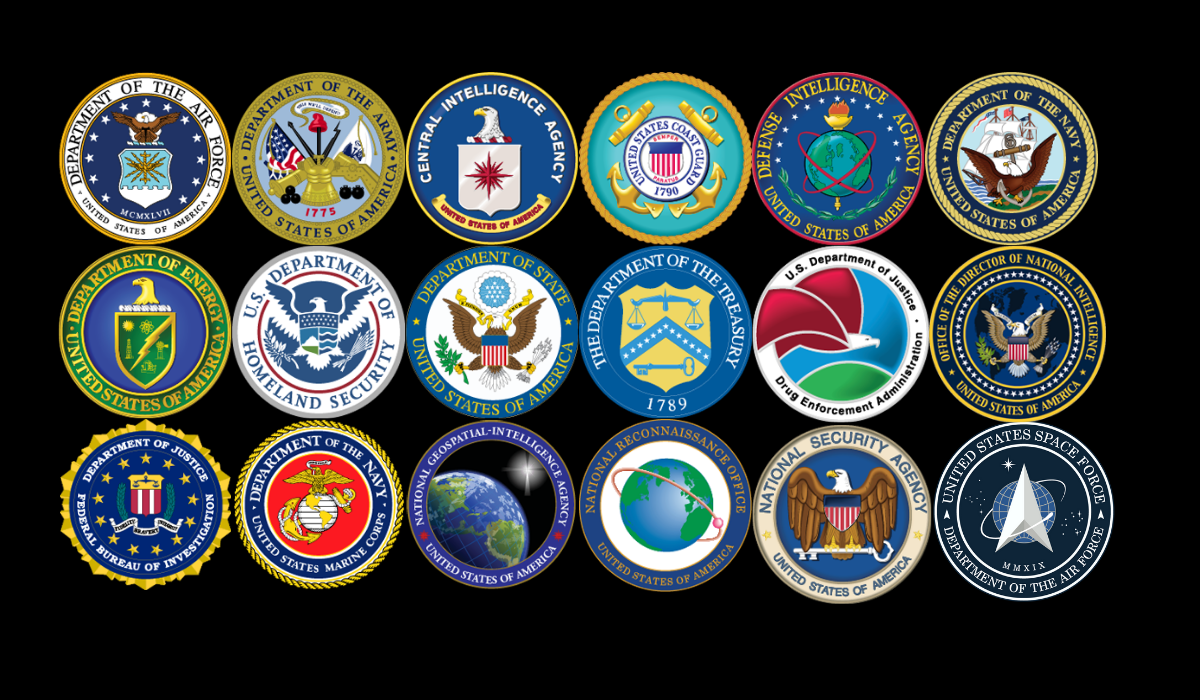If you are not a member of the U.S. Intelligence Community, you probably did not read the Annual Threat Assessment published by the Office of the Director of National Intelligence, published in February 2022. Don’t worry, we here at Atlas read it for you. Since the time of publishing, we have seen an increasingly aggressive China building contracts and treaties with Southeastern Asian, African, and Middle Eastern Nations. Not to mention what everyone has been talking about, the invasion of Ukraine by the Russian Federation, keeping those events in mind let’s dive in.
China
The ODNI has identified this as the CCP’s primary strategic goal:
The Chinese Communist Party (CCP) will continue efforts to achieve President Xi Jinping’s vision of making China the preeminent power in East Asia and a major power on the world stage. The CCP will work to press Taiwan on unification, undercut U.S. influence, drive wedges between Washington and its partners, and foster some norms that favor its authoritarian system. China’s leaders probably will, however, seek opportunities to reduce tensions with Washington when it suits their interests.
The CCP has capitalized on the 2021 Afghanistan withdrawal to drum up military, economic, and political support for Chinese intervention throughout the Asian continent, as shown by several high-profile visits of the Chinese Foreign Minister to Afghanistan and neighboring nations. The Belt and Road Initiative (BRI) is the primary vehicle through which the CCP hopes to move these ambitions. This multi-trillion dollar international aid program looks to displace the 1945 Marshall Plan as the most consequential international aid package by providing astronomical loans to resource-rich nations. These loans are meant to build key infrastructure in which the CCP and its satellite companies operate or flat-out control, especially if the recipient nation cannot make good on its payments, as we have already seen in Hambantota, Sri Lanka. These infrastructure projects such as ports, airports, highways, and canals are designed to provide preferential treatment to China, facilitating more trade returning to China.
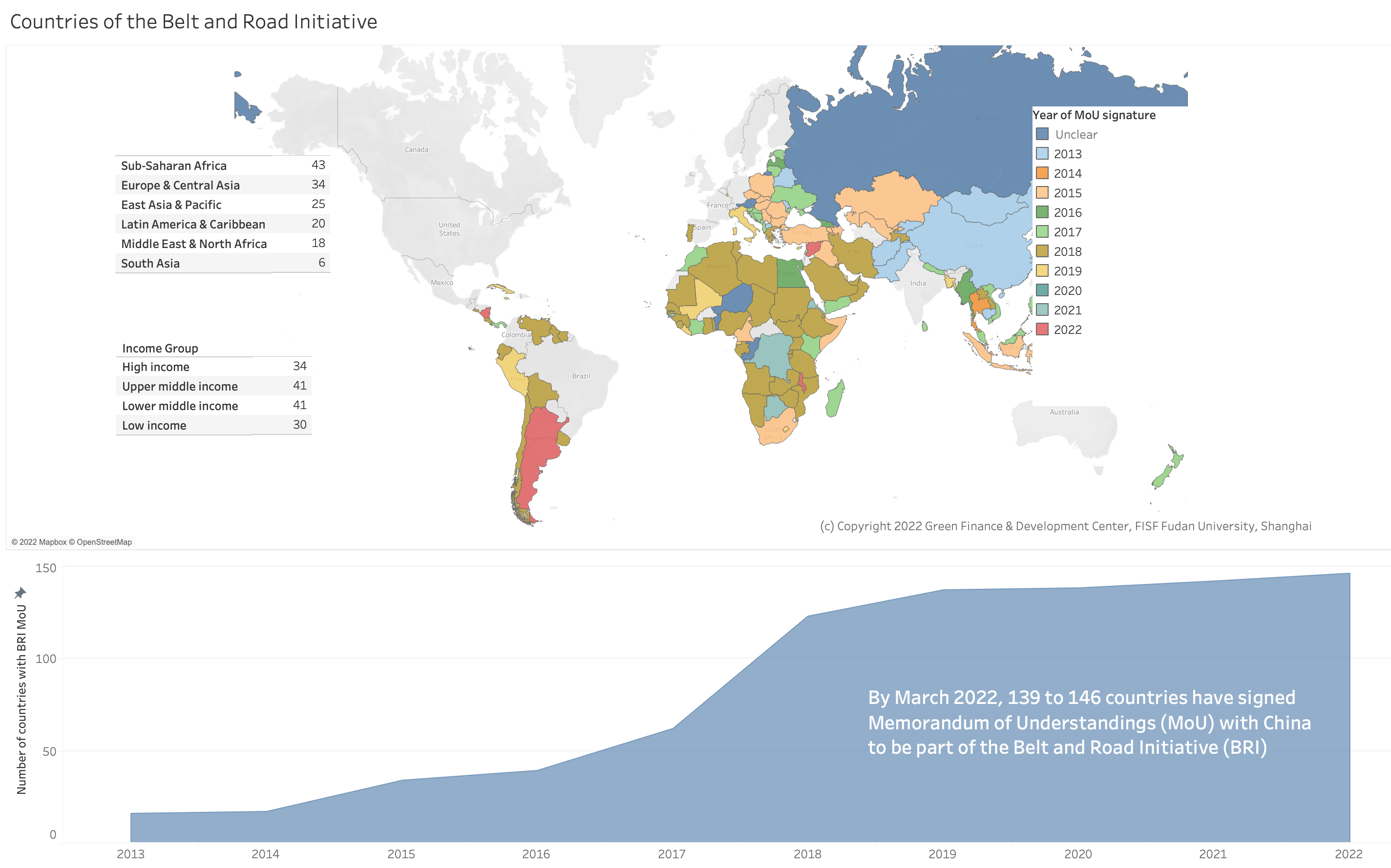
China has taken several key military steps in 2021 and 2022 to compete against the United States in the three “island chains”. Throughout 2021 and 2022, the Peoples Liberation Army Navy and Peoples Liberation Army Rocket Force moved several long-range surface-to-air missiles and surface-to-surface missiles into the contested Paracel and Spratley Islands in the South China Sea. These systems are meant to deny sea and air access to the U.S. and allies in the First Island Chain. China seeks to dominate here. In 2021, the Peoples Liberation Army Navy commissioned 22 major surface combatant vessels. This increased naval potency has the immediate goal of challenging the U.S. and allies within the Second Island Chain, where China hopes to match the U.S. And finally, in 2021 and 2022, the CCP demonstrated several experimental technologies such as hypersonic glide vehicles and advanced long-range aviation such as the H-6N, their first nuclear-capable bomber. With these systems and more, the CCP look to disrupt U.S. and allied operations in the Third Island Chain, where traditional U.S. “Iron Mountain” doctrine would seek to use as a rear area for logistical sea basing. The Third Island Chain is defined by the Hawaiian Islands.
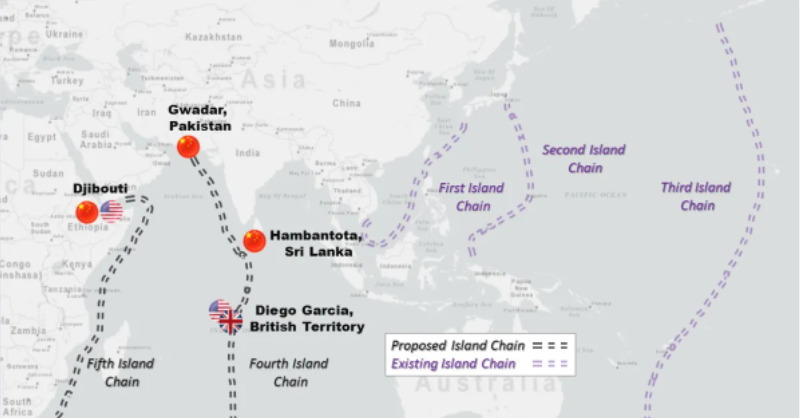
Outside of the traditional three-island chain discussion, there is also the concerted effort by the CCP to expand its naval bases to Africa and the Middle East. In late 2021, the CCP secured contracting with Equatorial Guinea to establish its first Atlantic naval base. The CCP has also reportedly abandoned plans to establish a military base in the UAE, after the U.S. Intelligence Community revealed these plans to lawmakers, pressing the Gulf nation to choose China or the U.S. (they chose the U.S.) These developments, among others, show that the CCP is departing from its traditional domestic military basing and looking to challenge the U.S. and allies in both the Fourth and Fifth Island chains.
Russia
The ODNI stated this as the Russian Federation’s strategic objectives:
We expect that Moscow will remain an influential power and a formidable challenge to the United States amidst the changing geopolitical landscape during the next decade. It will continue to pursue its interests in competitive and sometimes confrontational and provocative ways, including pressing to dominate Ukraine and other countries in its “near-abroad,” while exploring possibilities to achieve a more stable relationship with Washington.
While ODNI published this before the events of February 24th, 2022 it is worth noting the underlying currents have not changed despite the increasing friction between the U.S. and NATO with Russia. The Russian military has shown its extremely degraded capability to conduct SEAD operations, as shown by the survival of what many believed to be an inferior Ukrainian IADS in the face of one of the world’s largest inventories of strike aircraft and precision-guided munitions. Russian supply chains and their subsequent targeting by Ukrainian TB-2s highlighted to the world that the foreboding Russian Ground Forces were, to a degree, paper tigers.
However, it is important to note that much of the Ukrainian success against the Russian Ground Forces has been due to the massive supply of anti-tank-guided munitions such as the American Javelin. In fact, the United States has sent one-third of its total inventory to Ukraine, along with a sizable number of Stinger MANPADS. While some have lamented this decrease in strategic inventories, many within the Intelligence Community applauded the effects. After all, these weapon systems were designed with the intent to destroy Russian tanks and aircraft, a design being fully realized without American forces being put in harm’s way.
The conflict in Ukraine and the subsequent international backlash has highlighted one of the key points of the threat assessment and that is Russian influence in the Western Hemisphere. Nicaragua, Cuba, and Venezuela have been identified as key parts to Russia’s foreign policy goals in the Americas. Those nations also voted to not hold Russia accountable during the U.N. General Assembly vote on condemning the invasion, signaling a complete diplomatic alignment.
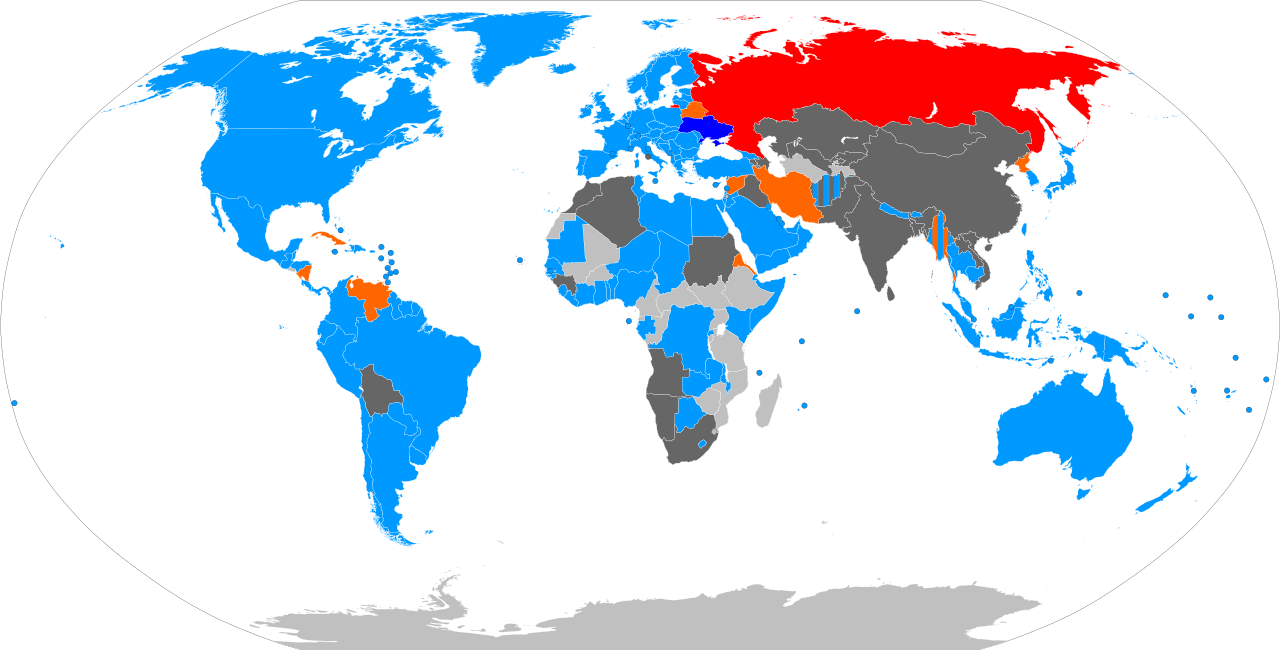
Grey- Countries that have maintained a neutral stance
Orange- Countries that have blamed the invasion on Ukraine and/or NATO provocation
Light Grey- Unknown
Red- Russia
Dark Blue-Ukraine
As the invasion of Ukraine continues to unfold and the Russian Federation pursues this whole of government approach to achieving its tactical and strategic goals in Eastern Europe, we can expect Russia’s malign influences through cyber, corruption exploitation, and arms and energy exports to accelerate beyond normal levels in order to offset the military and economic setbacks. Recent domestic issues in the United States such as the expected overturning of Roe V. Wade and upcoming elections will be rich opportunities for exploitation.
Iran
The ODNI assessed the strategic goals of Iran as:
Iran will continue to threaten U.S. interests as it tries to erode U.S. influence in the Middle East, entrench its influence and project power in neighboring states, and minimize threats to regime stability. Tehran will try to leverage its expanding nuclear program, proxy and partner forces, diplomacy, and military sales and acquisitions to advance its goals. The Iranian regime sees itself as locked in an existential struggle with the United States and its regional allies, while it pursues its longstanding ambitions for regional leadership. The election of President Ebrahim Raisi in 2021 has invigorated Supreme Leader Ali Khamenei to try to make progress toward his long-term vision of molding Iran into a pan-Islamic power capable of defending global Muslim causes while tightening its theocratic rule at home.
American forces supporting the Global War on Terror in the Middle East will continue to be targeted directly and indirectly by Iranian Revolutionary Guards Corps fighters and their proxies. The ongoing conflicts with ISIS and Al-Qaeda provide a durable cover for Iranian agents to act with deniability in Iraq, Syria, Yemen, and the Gulf, where American warships frequently transit. However, it is the prospective war with Israel, which hardliners in both governments push towards increasingly confrontational rhetoric and military operations, that has U.S. planners worried. Regional war between the two states, even with a non-nuclear Iran, would be disastrous for peace and stability in the Middle East.
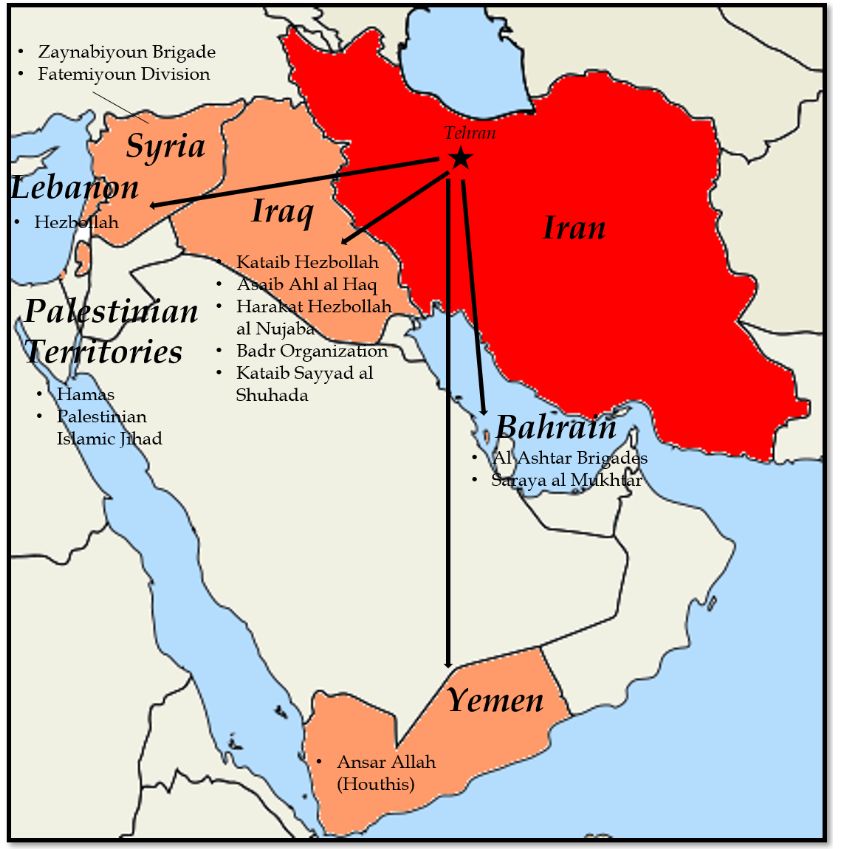
As negotiations between the United States, Iran, and their mediators over the fate of Iran’s civil and military nuclear programs continue to freeze and thaw, we can expect the Raisi government to capitalize on any gains made to bolster its domestic image.
North Korea
The ODNI has made this strategic assessment concerning North Korea:
North Korean leader Kim Jong Un will continue efforts to steadily expand and enhance Pyongyang’s nuclear and conventional capabilities targeting the United States and its allies, periodically using aggressive and potentially destabilizing actions to reshape the regional security environment in his favor. These actions will include developing and demonstrating capabilities up to and possibly including the resumption of nuclear weapons and ICBM testing. We assess that Kim views nuclear weapons and ICBMs as the ultimate guarantor of his totalitarian and autocratic rule of North Korea and believes that over time he will gain international acceptance as a nuclear power. He probably does not view the current level of pressure on his regime, the economic hardships resulting from sanctions and his domestic COVID-19 countermeasures as enough to require a fundamental change in approach.
North Korea, sometimes referred to as The Impossible State, has plagued American diplomats as an enigma, with the little diplomatic process made in dislodging the monarch began by Kim Il-sung in 1948. However, Kim Jong Un’s reign has seen a sharp increase in North Korean ballistic missile capabilities, even in the last year. The North Korean military is desperately fielding and testing novel equipment to attempt to defeat American ballistic missile defense systems established in Japan and South Korea. This goal poses a direct and evolving threat to not only the forces stationed throughout the Pacific but also to the homeland, where the Kim regime has made repeated threats with their national stockpile of 30-40 nuclear warheads. In the first month of 2022 alone, North Korea carried out 6 ballistic missile and cruise missile tests.
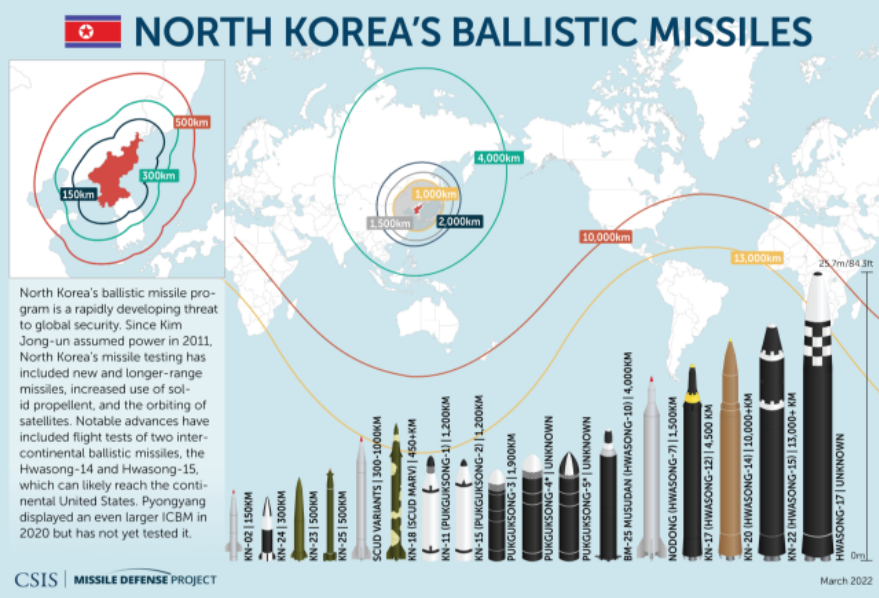
As of writing this post, North Korea has launched another ballistic missile into the Sea of Japan, its 14th test this year.
Other Threats to National Security
Covid-19:
The ODNI assesses that COVID-19 will continue to present economical and health challenges to the United States, especially through developing nations that rely on American support. However, COVID-19 has shown U.S. planners that the world is extremely vulnerable to the spread of infectious diseases due to the globalization of integrated supply chains and international trade and travel. The ODNI also offered this official explanation of the origin of the COVID-19 pandemic:

While the ODNI has identified these major threats to U.S. national security, there are several threats that have also been identified such as: Climate Change, Migration, Transnational Terrorist Groups, Home Grown Extremists, Financial Crimes, Malign Cyber Actors, Transnational Crime Organizations and their human and drug trafficking operations.
I encourage the reader to take a look at the full report:
https://www.dni.gov/index.php/newsroom/reports-publications/reports-publications-2022/item/2279-2022-annual-threat-assessment-of-the-u-s-intelligence-community

